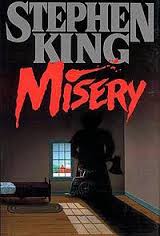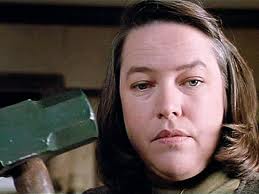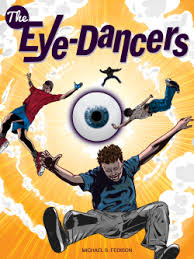Whenever you produce something, and enough people see it, there are bound to be critics. The world’s great masterpieces are not universally loved. And Oscar-winning movies elicit a wide range of opinions.
So it was one day, several years ago, when, during a free moment at a former job of mine, I had a disagreement with a coworker named Rob. Rob was a good, reliable employee, neat, orderly, someone who painstakingly dotted his I’s and crossed his T’s.

He had an event planner on his desk that was always filled in months in advance. If you were to look up the term “detail-oriented” online, you might just see Rob’s picture staring back at you.
I liked Rob. He and I got along well–except when it came to movies. We agreed every now and then, but most of the time we were the amateur version of Siskel and Ebert–always finding ways to contradict each other. And on that particular day, he took aim at one of my all-time favorite films, Forrest Gump.
“It’s the worst movie I ever saw!” he exclaimed. “Totally idiotic. The guy runs across America. For three years!” (Actually, it was, according to Forrest, three years, two months, fourteen days, and sixteen hours, but who’s counting?) “A superhero couldn’t do that! It’s not humanly possible. It’s completely illogical and stupid.”

I tried to explain that on many levels, Forrest Gump, based on the novel of the same name by Winston Groom, is a fairy tale. Not everything in the movie can be, or should be, taken literally–which is one of the many aspects of the film I love.

On the one hand it is the humorous, wacky, larger-than-life story of a man who always finds himself at the center of history-making events. But on the other hand, it is a probing character study, a very personal story about Forrest and the people closest to him. It is a rich, layered movie that never gets old, no matter how many times I watch it.
Rob wouldn’t hear of it. He was able to accept many of the film’s eccentric qualities and plot lines (“I liked the ping pong,” he admitted), but Forrest running across America? That’s where he drew the line. Much like Marc Kuslanski, Rob could not, would not, get past the logic/commonsense divide. No one can run across America for three solid years. For him, the suspension of disbelief required to enjoy any fantasy was shattered during that scene. It ruined the story for him, and, as much as I disagreed with him, it did get me thinking about the kind of speculative storytelling that stretches and challenges the imagination. How do authors, screenwriters, television producers, creators, present fantasy in a way that most people can digest as believable and “real”?

For me, the “running sequence” in Forrest Gump works beautifully. It fits the theme, tone, and style of the movie, and enhances the story. But why? How? And, while there will always be some readers (or viewers) like Rob, who cannot take the leap you as the storyteller want them to take, what elements need to be in place to portray an “impossible” or improbable scene in a believable way, a way that an audience can enjoy despite (or perhaps because of) the logic gap that so angered Rob?
I believe the answer lies, as it so often does, in character. Consider, for instance, the scene that precedes the Forrest Gump running sequence. A constant theme throughout the movie is Forrest’s unwavering love for Jenny, his one and only girl. From the time they were children, he and Jenny went together “like peas and carrots.”


Except–Jenny grew up, a very troubled person, and wandered the country, searching for a meaning and peace she never seemed to find. She would occasionally cross paths with Forrest over the years, but usually they were miles apart. He loved her, wanted to be her boyfriend, as he openly admitted, but she never seriously considered his offer. “Forrest, you don’t even know what love is,” she tells him, assuming his low IQ prevents him from understanding and knowing. . . .
But then, after years of separation, Jenny returns, spends some time with Forrest at his home. He calls it “the happiest time” of his life.


At one point, he asks her to marry him. “I’d make a good husband, Jenny,” he says. She agrees that he would, but when he asks her why she doesn’t love him, she just shakes her head.
“I’m not a smart man,” he says. “But I know what love is.”

That night, for the first time, Jenny comes to him not just as a friend, but as a lover, telling him she does love him. For Forrest Gump, this night is the one he has always dreamed of, the moment he has always longed for. But then it all comes crashing down, a house of cards strewn and wrecked by a gust of wind.
In the morning, while he sleeps, Jenny leaves. Without a word. When we see Forrest next, there is no dialogue, no music, just a series of shots zooming in on him, silent. We can feel his loneliness, his heartbreak. From the crest of the highest, most exhilarating wave, he has fallen into the depths. So what does he do?
In Forrest’s own words, during a voice-over that begins the memorable running-across-America sequence . . .
“That day, for no particular reason, I decided to go for a little run. So I ran to the end of the road. And when I got there, I thought maybe I’d run to the end of town. And when I got there, I thought maybe I’d just run across Greenbow County. And I figured, since I’d run this far, maybe I’d just run across the great state of Alabama. And that’s what I did. . . . For no particular reason, I just kept on going. I ran clear to the ocean. And when I got there, I figured, since I’d gone this far, I might as well turn around, just keep on going. When I got to another ocean, I figured, since I’d gone this far, I might as well just turn back, keep right on going. . . .”
And for several minutes, we watch Forrest, now with long, uncut hair and a beard that would make even Santa green with envy, run through pristine mountain hollows and along winding country lanes.

Many things happen during the scene, which has its share of zany humor and entertaining encounters. But at its heart, it is about Forrest dealing with Jenny’s departure. “I’d think a lot” (as he ran), he tells us in a voice-over. He’d think about his mother, his friend Lieutenant Dan, but, “most of all, I’d think about Jenny.”
And when, after more than three years, he finally stops running, he says: “My momma always said, ‘You got to put the past behind you before you can move on.’ And I think that’s what my running was all about.”

Yes. A three-year run across America is pretty far-fetched. And yes, it would be near-impossible to do, on so many levels. But we can overlook these things because the scene is, at its core, a response to something we can all relate to–hurt, rejection, a lifelong dream evaporating through your fingers like a hundred tiny pebbles scattering to the earth. Needing to find a way to cope with loss. Coming to terms with something that leaves a sour, bitter taste in your mouth every time you swallow. It’s a fair assumption that none of us has ever run across a continent for three-plus years. But we’ve all experienced the feelings that motivate this title character to journey on his fairy-tale marathon.
And that, I think, is the axle around which everything turns. Certainly, when I wrote The Eye-Dancers, a story of parallel worlds and ghost girls that invade dreams, I was taking the risk every speculative fiction writer does–creating a story that might come across as too fantastic, too impossible, too “out there.”

But for every quantum leap across the void, for every haunted dream sequence, for every step further into a mysterious and alien world, there is also a quiet, small moment when one of the main characters laughs at a joke, or shares a childhood memory, or tackles an insecurity that has been gnawing away at him for years.
Forrest Gump, I think, would agree. If we can create characters readers will root for, care about, become invested in, we can then, boldly and imaginatively, fly them across the empty, black reaches of space, or transport them through endless blue voids, or have them go on a journey to another dimension entirely.

So, all these years later, Rob, I still disagree with you.
Great fictional characters, characters we believe in, can take us anywhere.

Thanks so much for reading!
–Mike





















































































































